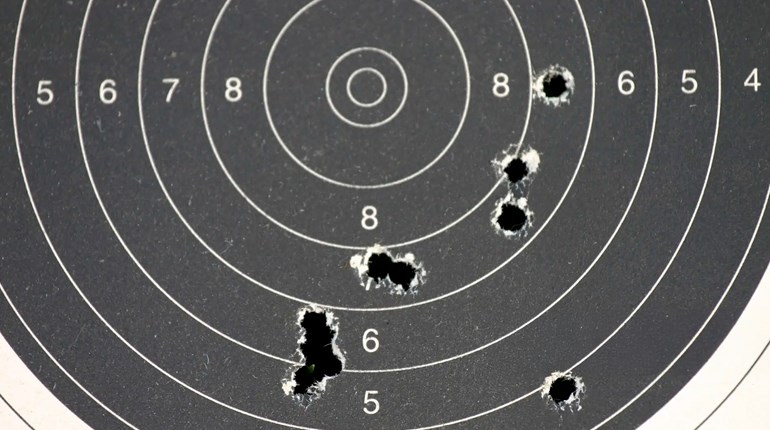
When practicing with both a rifle and a handgun, it is important to hone not only your marksmanship skills, but also your ability to transition from rifle to handgun in a safe and efficient manner.
While very few of us outside police and military circles routinely carry a carbine and a pistol whilst going about our daily routines, many of us do train with both platforms. As such, there’s a presumption the pistol is the backup to the carbine, and how we manage transitioning to the pistol is something that requires training—with essential safety considerations whether you’re practicing on your own or, especially, if training with others.
You might be surprised to know the Marines we train at Gunsite insist on checking and loading the secondary firearm—the pistol—before readying the carbine. Why? Because if you need the pistol, you really need it, and having neglected to fully load it could have disastrous consequences. Toward that end, they never holster a partially loaded pistol; if they shoot it, they conduct a tactical or emergency reload before holstering. Recon Marines caught with an empty holster or partially loaded pistol pay for this error by donning a 70-pound pack after class and running to the highway and back, a 5-mile round trip.
A general rule of thumb for transitioning to the pistol is to swap firearms if the carbine malfunctions or runs dry and the threat is within 25 yards. Beyond 25 yards, and assuming some form of cover, whether to get the carbine back up or stay with the pistol is optional. From a training standpoint, we teach the carbine is never slung unless it is empty, malfunctioned or on safe.
Here’s the drill:
Applying these principles, let’s set up at 15 yards. First, make ready (load) the pistol and holster it, then load the carbine with two rounds and come to a low-ready, muzzle-depressed position with the safety on, trigger finger straight along the receiver and thumb on top of the safety. On the start signal, point in with the carbine, deactivate the safety and fire two rounds (the bolt carrier will now be locked to the rear and the carbine is empty). Lower the carbine to the sling, present the pistol from the holster and fire two rounds.
Set it up again by reloading the pistol, holstering and loading the carbine with two rounds in the magazine, bolt carrier forward and the safety on.
If you run this drill 10 times, you’ll fire 20 rounds of pistol and 20 rounds of carbine ammunition while getting in some manipulation repetitions. If you’re a trainer, please note the practice of loading only two rounds in the carbine magazine for each repetition as a means of ensuring the carbine is empty before being lowered to a sling position. This prevents a live (loaded) gun from being slung, the danger being someone trying to rush, neglecting the safety and snagging the trigger on a piece of gear.
Unless you’re a Marine training at Gunsite, you’ll not be sent to the highway for failing to load your pistol, but it’s a strong lesson I hope you’ll bear in mind while practicing transition drills.



































